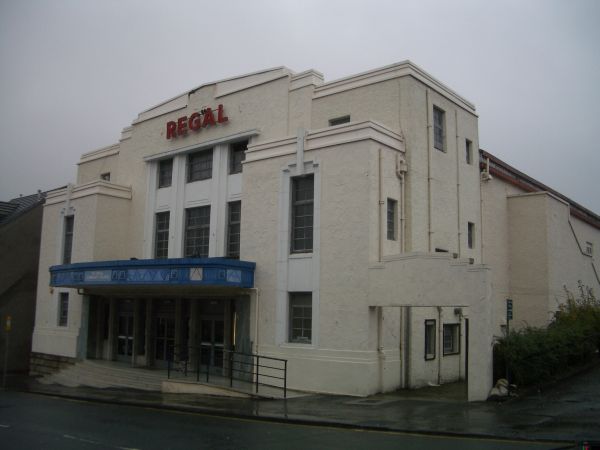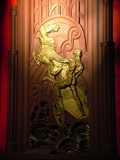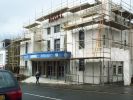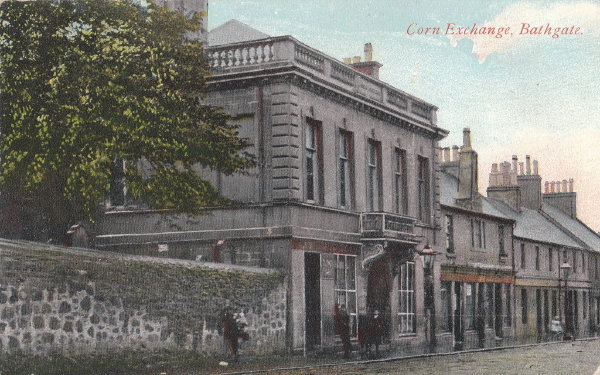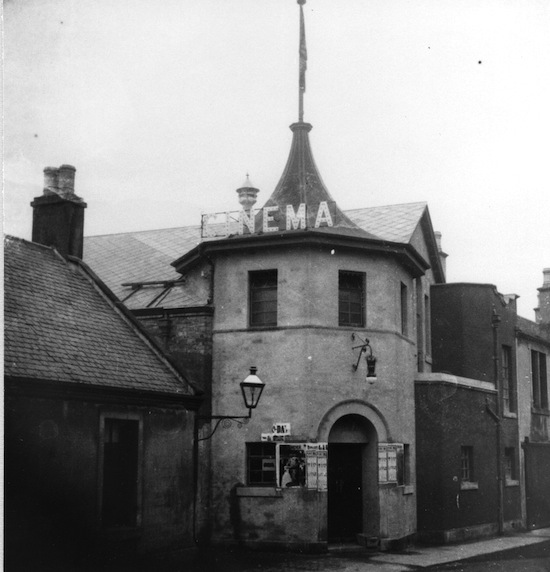Earliest
intact survivor of the George Green chain of cinemas. An early example
of a work by John Fairweather, it is a good, largely unaltered example
of cinemas of the period just after the first world war, and before the
developments towards modern streamlined design.
The Bathgate
Pavilion opened 25th March 1920, replacing an earlier cinema run by
George Green in the town. This older cinema, the 1913 Picturehouse, had
been converted from a roller skating rink, when Green’s first decided
to set up a permanent cinema in the town (this family of show-folk had
taken early to cinema exhibition). The replacement building, in George
Place, was typical of cinemas of the period.
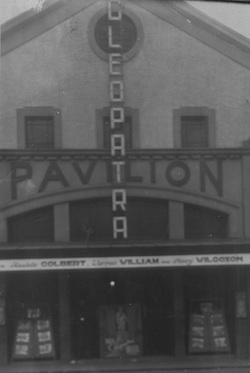 |
The exterior was
plain; unlike later cinema buildings, there was no attempt to create a
separate show fašade to hide the auditorium block behind; here the
frontage is the auditorium block itself. This building was clearly
built to a tight budget.
The composition is mostly symmetrical, with
a set of entrance doors placed centrally beneath an arch, echoing the
proscenium arch inside the building. Three small windows above this
arch gave light to the projection room, while above the gable is
pierced by a round hole for ventilation.
The series of doors, with a
row of stained glass above them, lead to a small entrance foyer. This
features a central paybox, stairs up to the balcony on either side, and
doors through to the stalls. This small foyer space, taking up a very
small proportion of the volume of the building, is typical for cinemas
of the time. It was only later that grand entrance foyers and cafes
began to be typical features of a cinema (in order to increase takings
from catering as exhibitors started to take larger percentages of the
profits from actually showing films); at this point however maximising
takings by maximising seating capacities on a small site was key.
The
long, rectangular auditorium, which originally sat 1067, is in good
condition. While the cinema seating has been removed and the stalls
rake floored over to allow for bingo, the building has been well looked
after.
The ceiling is segmented, with plain panels outlined by
detailed decorative plasterwork foliage. A series of ventilation ducts
are placed down the central ceiling panels.
|
Archive image courtesy of Ian HossackThe proscenium is tall,
with straight sides, and a curved archway above. It is flanked by two
archways, with carved decorative panels within. The side walls are
largely plain, broken up by a series of pilasters with decorative tops.
One wall features a series of square decorative panels between these;
the other has windows covered by shutters in the same positions.
Windows were often a feature of earlier cinema auditoria, opened
between performances to allow fresh air and daylight into the
auditorium.
The small balcony has a flat front, and is flanked
on either side by a theatrical-style false box and blank archway
(partially pierced on one side to give a view from an office into the
auditorium).
Closed as a cinema in 1967;
Now a bingo hall. It was listed
Category C(s) by Historic Scotland in 2008



